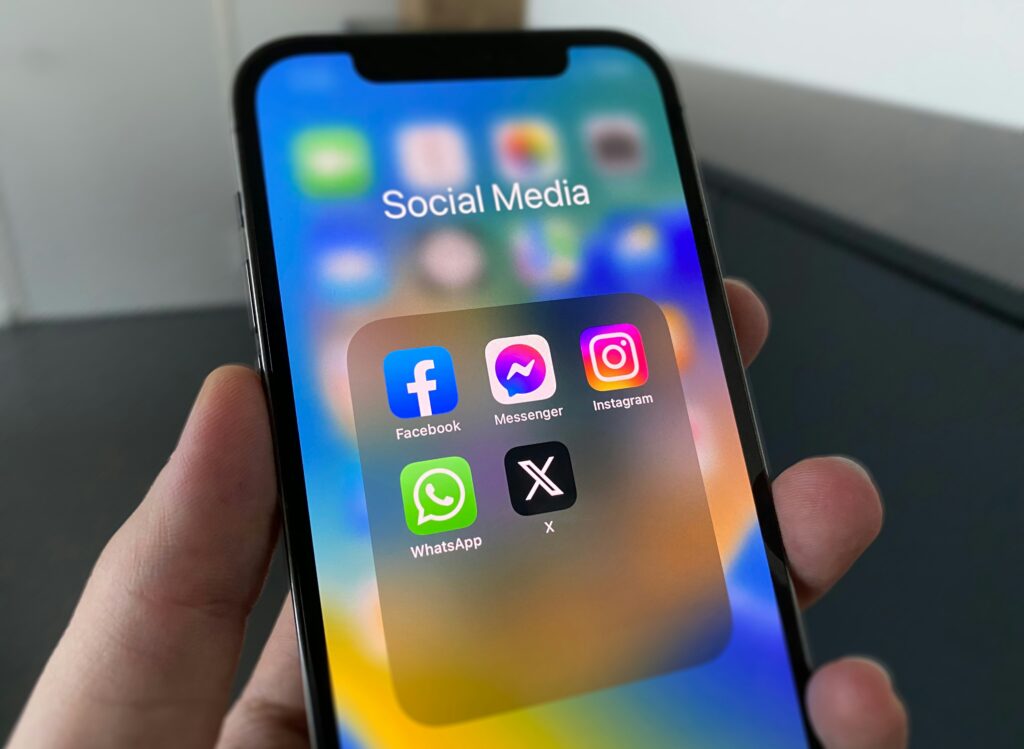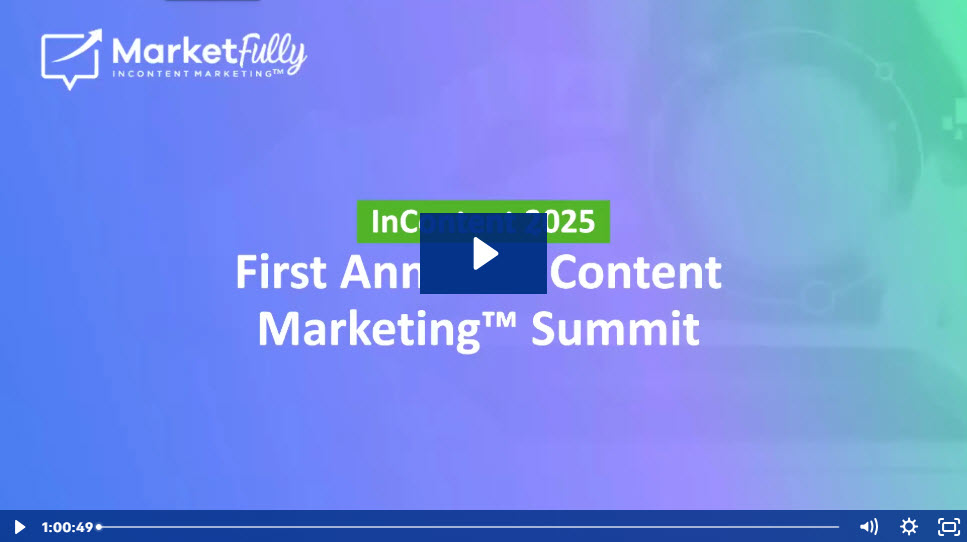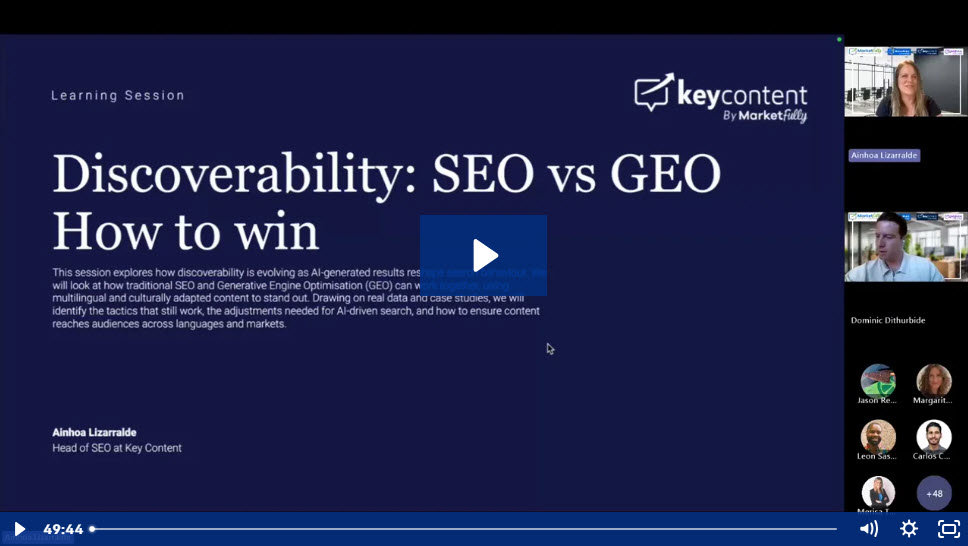Currently, social media use is higher than it’s ever been, and as of mid-2025, there are over 5.4 billion people on social platforms, spending close to 2+ hours per day browsing, chatting, and engaging with various content. Because there are so many options out there and so many different demographics using social platforms, audiences are fractured across regions and channels, so you won’t be able to rely on one particular channel.
Many markets prefer local apps, while others have language splits or demographic differences, like Latin America vs U.S audiences. 65 to 76% of consumers are far more likely to buy when content is in their native language, and close to 40% will avoid buying altogether if the information isn’t localised.
Global brands have to adapt their voice, style, and channels to local standards to stand out and build trust.
Understanding your audiences across various markets
A lot of markets use different platforms or content formats, so global brands have to do their research if they want to reach the right audience. As an example, LINE is the dominant app in Japan, with roughly 80% of the population using it, while apps that are popular in the West, like Instagram or TikTok, are a lot smaller.
There are also markets where Western apps are mostly blocked, like in China, where WeChat is the dominant app, and social media platforms are all local.
Language preferences are another thing that plays a huge role in connecting with different demographics. Studies show that 76% of buyers prefer marketing in their own language, and 65% are more likely to purchase if content is in their native language. In fact, roughly 40% of consumers won’t buy products that aren’t offered in their language, which is why you need multilingual personas.
Creating detailed audience personas by region, including age, interests, and language habits, helps tailor your content to the right audience. Tools like regional surveys or social listening can reveal local trends and search terms, so you can adjust your content accordingly.
First, map out who your audiences are in each market, where they spend time online, and what language they prefer, and then bring your social presence in line to meet them on those platforms in their own voice.

Cultural intelligence and SME input
Cultural intelligence is the art of tuning your messaging to local audiences. If your content sings in tune with the local beliefs, values, and taboos, you have a better chance of engaging the market.
At Key Content, we recommend building cross-functional review teams that include translators, local marketers, legal advisors, and cultural consultants who collaborate during content creation. We even train linguists on cultural dimensions so they spot nuances
There are a few practical examples that’ll highlight the importance of culturally intelligent content and using SMEs.
Share a coke was where Coca-Cola replaced its logo with the most common first names in each market/locale, and then pushed shareable, name-driven social media content and localisation on the bottles. In the US, the campaign drove 1.25 million more teens to try Coke and an 11% sales lift on participating packs during the summer push; it also helped reverse a decade-long consumption decline for a period. In Australia, the concept began in 2011 with country-specific name lists, then rolled out to 80+ markets.
Another example is, Nike India created an ad campaign centred around Indian women athletes across all sports, and it was set to a pulsing track and seeded for social media and video. It was designed for local realities like role models, language-agnostic visuals, and Indian sporting contexts. It hit millions of views within days and drew mainstream coverage, which made brand relevance stronger among young Indian women entering different sporting arenas.
Spotify built country/region-specific editorials and programmes, like EQUAL Africa, Amapiano hubs, and COLORS, and then amplified local artists on local and global playlists. Some of the results they recorded include Afrobeats streams surpassed 15 billion, Afrobeats grew 550% since 2017, Amapiano topped 1.4 billion streams in 2023, and EQUAL made 400 ambassadors across 184 markets with 13 million hours of listening in year one. All from going local.
Cleveland Clinic built a medically reviewed consumer health site with physician authors and editors, and tightened it with a formal editorial policy that included fact-checking, citations, and expert review. The Content Marketing Institute reports that it grew into one of the most-visited healthcare destinations, with multi-million monthly visits, and credited the success to SME involvement and service-driven topics that match patient questions.
By treating cultural intelligence as a core part of strategy rather than as a filler or afterthought, brands avoid huge pitfalls and create more genuine connections.
Global platform strategies
You’ll need to study up on each platform as well, and remember that each one needs a tailored approach.
If you’re targeting Western countries using apps in the Meta Network like Instagram and Facebook, you can leverage the “Global Pages” or multiple regional pages, or set up a main brand page and localised sub-pages targeted by country or language.
Paid ads on Meta can be geo- and language-targeted, so craft separate ad copy for each market. Always use culturally appropriate images and hashtags. E.g., a UK fashion post might use #sustainablefashion, but a French version would use #modeéthique to match local search trends.
On TikTok, local trends are what control the market. The algorithm favours regional viral content, so your brand will need to work with local influencers and creators. Use country-specific challenges, music and memes. For instance, a car brand might sponsor a Brazilian dance challenge on TikTok Brazil, and a different creative in China. TikTok’s short video format means messages must be clear immediately, and subtitles in the local language or voice-overs can help reach non-English viewers.
LinkedIn is more B2B/professional. Companies often create one corporate page, but they can segment by region and post things like job openings or thought-leadership articles in local languages.
Usage can vary, though, with LinkedIn working well for a market like the U.S, but less effective in Latin America, where professionals engage more with Facebook groups. You’ll need to test LinkedIn’s effectiveness per market. In some regions (e.g. Latin America), community groups or country-level pages may resonate better with professionals.
X (Twitter) relies on brevity and quick impact, and it’s important to post natively. Brands often keep both a global feed and localised country accounts. In countries where X is popular, you must post natively and use local hashtags and handle trending topics.
In all cases, consistency of brand voice is the key, but tone and content must be adapted to engage local audiences. For detailed guidance on managing multilingual channels, see Key Content’s Multilingual Social Media services page.

Regional Social Media platforms
The global market is teeming with social media apps that are used in various regions for various purposes, and it’s your job to make sure you have specific strategies for every market. If you’re trying to engage people in the Chinese market, WeChat is a non-negotiable super app that combines messaging, payments, and official accounts. Companies build WeChat mini-programs, publish content, and run in-app ads.
Similarly, Xiaohongshu (RED) has around 300 M Chinese users, with 79% of them being female, and blends social posting with e-commerce reviews, and brands often send free samples to Xiaohongshu “influencers” for their reviews.
In Russia, VKontakte is the king of the apps, with 92 M users. Russian campaigns often start on VK rather than Instagram. Odnoklassniki is another Russian network for older demographics. Meanwhile, Telegram, though technically a messaging app, is hugely popular for news broadcasts, and brands can run “channels” on there.
Japan’s social landscape is dominated by LINE, with 97 M users, and is used for everything from brand chatbots to QR-based promotions. Other networks to look at include Japan’s original SNS, Mixi, which is now smaller, and X, with 45 M+ users, mainly for celeb and news content.
Local platforms like Pinterest Japan (Pinto) or TikTok Japan also have niche followings. Brands often pay to advertise on LINE or partner with local content creators on Twitter in Japan.
In South Korea, besides Facebook, which has a very low reach, brands focus on KakaoTalk with its 48.9 M users. Kakao’s ecosystem includes the social media platform, KakaoStory, and KakaoGame/Naver. Ads on KakaoTalk or content on Naver Blog/Café can be effective.
Your approach to global social media marketing must be just that, global. Find out what works best in your targeting area, and leverage that to engage the local audience.
How to approach content creation and localisation
Once you know your audience and platforms, there are four methods to your content creation:
Translation: Translate your source content word-for-word into the target language. The pros for this are that it can be fast and cost-effective, especially for factual or technical texts. The downside is that it often reads flat and can cause confusion when local idioms or humour are used and translated.
Localisation: This is improved translation. You adapt images, colours, dates, humour, and examples for each market. It’s good for websites, blogs, or social posts where the overall content stays the same but needs a native feel.
Transcreation: Essentially, the creative rewriting of marketing copy like slogans, headlines, or taglines to capture the original spirit while fitting into local culture. This is more expensive and takes longer, but with a much bigger impact. In advertising, transcreation makes sure the emotional tone and wordplay used will still work in each language.
Native content creation: Write entirely new content in each language, based on local trends and news. Instead of translating the English blog, publish a fresh blog for Brazil on a related topic, written by Brazilian writers. It’s the most costly route, but it often pays off in engagement. Key Content has seen brands gain incredible traction through their native content creation services.
At the end of the day, most strategies use a mix of these approaches, like using translation for support FAQs, localisation for blog posts, transcreation for ad headlines, and original creation for region-specific campaigns.
Asana partnered with Key Content to craft performance-driven multilingual content. The results were striking. There was a 21 – 59% lift in traffic and a 92 – 209% increase in conversions across key markets. This highlights that investing in professional localisation can drive real ROI. Check out our Multilingual Content Marketing page for details on this case.
Discoverability
The first half of the battle is creating the content, the second half of the battle is making sure audiences find it.
Here are a few of the platform-specific discoverability tactics to consider:
- Localised Keywords: Research what terms your audience actually uses and use them. A literal translation of your English SEO keywords might miss the mark.
- Hashtags and Social SEO: Each platform is essentially its own search engine, so identify popular local hashtags and incorporate them to catch local attention.
- Platform Metadata: Don’t forget profile info and metadata. Write your bio/description in each language, and translate keywords used in usernames or hashtags. For video content, translate and subtitle any text overlays.
By covering SEO on each channel, you can make sure that potential followers or buyers can discover your brand in any language.
Engagement and community building
Once people find your content, use these regional tactics to build communities and loyalty:
- Localised Interactivity: Use platform features in the local language. Host live events on popular local social channels with local hosts, and invite questions from the audience.
- User-generated content: Encourage your followers to create content, like launching hashtag challenges that reflect local culture.
- Local influencers and ambassadors: Partner with influencers from each market because they bring language fluency and cultural credibility. A sneaker launch might use a popular K-pop artist’s TikTok in Korea and a soccer player’s Instagram in Brazil.
- Personalised replies: Equip your social team with multi-language support that includes dedicated community managers, or use trusted translation services to reply accurately and quickly.
- Local tone and timing: Be prepared to adapt your voice and posting schedule based on your research. Pay attention to local conventions. Post at peak local times.
By engaging authentically in each market’s language, you can turn followers into communities, and over time, these communities become brand advocates.
Measurement and iteration
Multilingual social marketing has to be data-driven to be as effective as possible. So, you need to define KPIs for each market rather than just global totals. For each language or country campaign, track metrics like reach, engagement rate, click-throughs, leads, etc., separately, and use analytics tools that support multiple languages and geographies.
Social listening is one of the most important tools at your disposal. Choose a listening tool that handles many languages, and use it to track brand mentions, sentiment, and trending topics in each language. Listening lets you spot issues or viral posts early, regardless of the language.
Test–analyse–refine
Run A/B tests of creative elements in each market, like image style, headline, CTA text, etc., and measure which version resonates the best locally. Use polls or reaction counts as feedback, and then adjust your strategy based on the information. As cultural trends shift, so should your content evolve with them.
Remember that success in social media is as much about local engagement metrics as it is about global reach. A viral post in one country that floods your main feed means nothing if it drives no action in the market.
Future trends for 2025 and beyond
Looking ahead, the emphasis on human-led, authentic content seems to only be growing stronger, and two key trends stand out.
Human-centered & UGC
The more the web is flooded with content, the more platforms are rewarding authenticity, which is something you can capitalise on. The data shows that user-generated content (UGC), posts from real people, have a much higher engagement rate than brand-generated ads or AI-generated content. Consumers from around the world, especially the younger generations, prefer genuine stories over carefully created corporate messages.
Brands will leverage this by featuring local customer testimonials, employee stories in local languages, or social proof. Marketers are already encouraging customers to share unboxing videos or reviews in their own words and then amplifying these across social.
Evolving AI search & SEO
With AI-powered search, brands have to incorporate multilingual SEO strategies into their approach. Content will need to answer questions in a conversational style in each language, and voice search in local languages and regional dialects will matter more and more. Focus on creating content that sounds natural when spoken or queried, and continue investing in long-tail, question-based content per market.
Privacy and ethical engagement
Users are increasingly cautious about data and algorithmic bias, so you can expect more scrutiny on social media algorithms. Content that respects local norms about privacy, like avoiding too-personal tracking, and shows ethical values like diversity and sustainability, will gain more trust from their followers.
Human-led localisation that’s based on ethical, culturally sensitive messaging will reinforce trust with its audience as platforms and users demand more transparency.
What does this all mean?
As time goes on, our social media landscape becomes more fragmented and we have to tailor our content to specific regions and audiences more and more. Your content has to be culturally intelligent, and it must signal respect and relevance to local audiences. Brands that speak their customers’ language will build stronger connections.
This is where specialised expertise comes in, and why Key Content offers its clients a team of native linguists and cultural strategists who understand each market. From initial research to ongoing content creation, this approach helps global brands create multilingual campaigns that truly resonate with their audiences.







